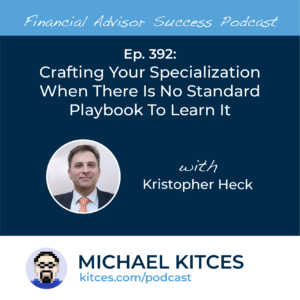Enjoy the current installment of "Weekend Reading For Financial Planners" - this week's edition kicks off with the news that at a time when employee retention has heightened importance for advisory firms given the ongoing competition for advisor talent, recent studies indicate that factors such as firm culture and leadership, as well as providing advisors with a sense of autonomy, can play important roles in building advisor loyalty to the firm. Which suggests that while firms might be tempted to zero in on compensation when it comes to retaining advisors, focusing on these other factors (which do not necessarily involve hard dollar expenses) could pay off in the form of increased advisor (and client) retention over time.
Also in industry news this week:
- 2 House committees this week advanced legislation that would halt implementation of the Department of Labor's new Retirement Security Rule, which, combined with ongoing lawsuits, threaten to derail the regulation either before or soon after it becomes effective in late September
- A Federal judge has put the future of the Federal Trade Commission's ban on non-compete agreements in limbo, issuing a limited temporary injunction and indicating that a final ruling on the regulation (with possible nationwide impacts) could come before the ban goes into effect in early September
From there, we have several articles on tax planning:
- Why potential upcoming increases to marginal tax rates and recent changes to RMD rules for inherited accounts could make Roth-style retirement accounts increasingly attractive for many clients
- How advisors can add value not only by regularly analyzing whether Roth conversions might be appropriate for a client in a given year, but also by communicating how they work in a clear manner to help the client better understand the strategy and its potential benefits
- How working clients can get more money into Roth-style accounts, from in-plan 401(k) conversions to in-service distributions
We also have a number of articles on marketing:
- How applying the principles of beauty, simplicity, and creativity when it comes to website design can help advisory firms stand out at a time when differentiation is becoming increasingly challenging
- Why targeting a firm's website and marketing content to an ideal client persona can help prospects better understand whether the firm can meet their unique needs
- How becoming a "knowledge sharer" online can help advisors build their brand and support higher quality personal financial information amongst a sea of "finfluencers"
We wrap up with 3 final articles, all about exercise:
- While middle age is associated with a growing number of aches and pains caused in part by natural muscle loss, regular exercise can help mitigate these trends and potentially lead to a better quality of life
- Why resistance training, in addition to aerobic exercise, is an important part of a healthy lifestyle and can ultimately improve longevity
- How targeting 4 "pillars" of exercise – stability, strength, aerobic efficiency, and peak aerobic output – can help an individual lead a healthier lifestyle, even if their exercise routine dropped off during middle age
Enjoy the 'light' reading!




